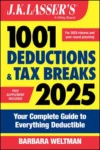Making Changes Midyear to Your 401(k) Account
According to one study, about 71% of employees have access to a 401(k) or similar plan at work, of which 77% currently contribute or have money invested in the plan. For many individuals, this is a primary source of retirement savings. Given tax law changes and stock market uncertainty, many participants may want to make changes to their investments or other changes during the year. What can be done?
Changing Investments
The average number of investment choices in self-directed 401(k) plans is 12, often including company stock. The participant chooses one or more investments in which contributions are placed. At some point, you may wish to change your investment holdings. Reasons for changing investments:
- Asset allocations. Say you’ve adopted an asset allocation formula and the holdings no longer reflect this formula (e.g., you wanted to be 50% in equity and, because of investment performance, you’re now 60% in equity). Changing investments will rebalance your holdings.
- Retirement age. As you get closer to retirement age, you may want more conservative investments.
- Employer stock. You may hold “too much” in employer stock. It’s not a great idea to put all your eggs—your job and retirement savings—in one basket.
- Fees. The fees related to a particular investment may be “too high,” in your opinion. You can learn more about fees from the Department of Labor at www.dol.gov/ebsa/publications/401k_employee.html or ask your plan administrator.
The tax law does not limit the number of times each year you can make changes. However, the investment plan may have limitations or restrictions. For instance, there may be minimum holding periods for certain investments.
Note: Sometimes there may be a blackout period, during which time your right to change investments (as well as take loans or obtain distributions) is suspended. You must receive a blackout period notice in advance of the blackout period. Typically, a blackout period occurs when plans change record keepers or investment options, or when there are corporate mergers or acquisitions.
Changing Contributions
If you are eligible to participate in a 401(k) plan, you can contribute as much or as little as you wish, within certain limits fixed by the tax law and by the plan. The maximum annual contribution for 2010 is $22,000—$16,500 basic contribution, plus an additional $5,500 for those who attain age 50 by the end of 2010.
Usually, it is advisable to contribute at least as much as is necessary to obtain the maximum employer contribution. This may be fixed at 50% of your contribution, but no more than 6% of compensation of your compensation is taken into account. Thus, if your compensation is $50,000, the employer contribution is limited to $1,500 if you contribute at least $3,000. Usually, employer contributions are determined by an employee’s total contributions as of the end of the plan year, which is usually a calendar year; the employee must be employed on the last day of the plan year. Thus, increasing contributions following a midyear raise or for other reasons will entitle you to optimum employer contributions.
You can halt making contributions at any time during the year, for any reason. Follow guidelines from the plan administrator for making a change. If you reduce contributions, your take-home pay will increase, along with your tax bill for the year.
If your employer reduces or suspends its matching contributions during the year, you must receive notice and be given an opportunity to change your contributions as well. However, employers with an automatic enrollment are not allowed to make changes in their mandatory contributions; employees can still make changes to their contributions.
Taking Advantage of Plan Changes
Typically, plans notify participants about plan rules, including any prospective changes, by December 1 so participants can decide what to do for the coming year. The IRS has decided that a plan is allowed to make certain changes during the year. These include adding a Roth 401(k) feature and/or permitted hardship distributions by participants. If midyear changes are made, employees can take advantage of them midyear as well.
Fiduciary
A person or corporation such as a trustee, executor, or guardian who manages property for another person.



